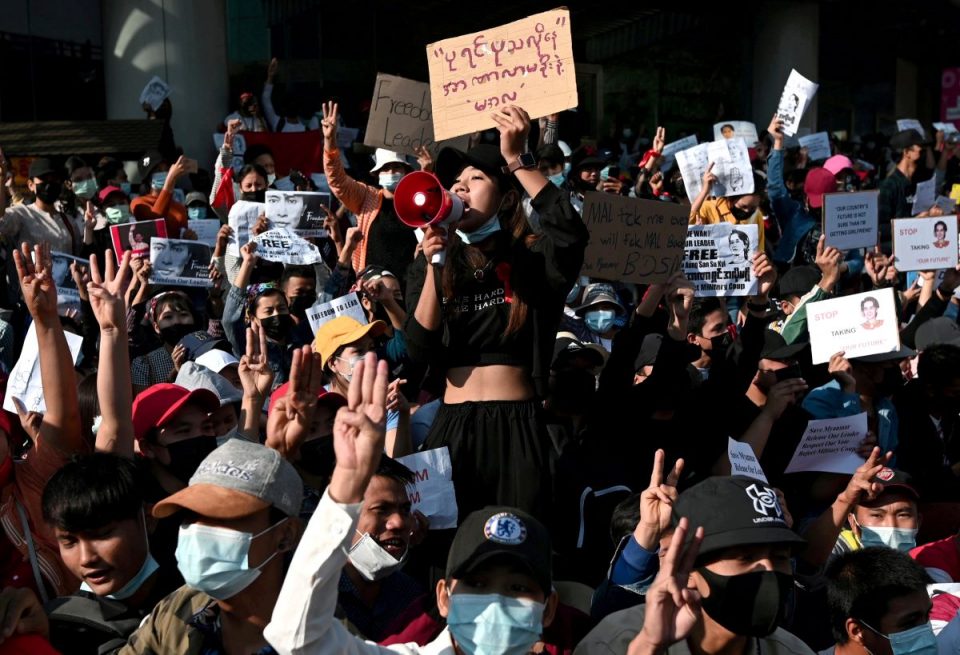YANGON, March 1 – Here is a timeline of events since Myanmar’s military took power in a coup on Monday, February 1.
February 1: Aung San Suu Kyi, President Win Myint and other senior figures from the National League for Democracy (NLD) are detained in an early morning raid.
The military declares a state of emergency for a year, and says it carried out the detentions in response to alleged election fraud, handing power to army chief Min Aung Hlaing.
The junta removes 24 ministers and deputies, naming 11 replacements.
February 3: Staff at 70 hospitals and medical departments across Myanmar stop work to protest against the coup. Others wear red ribbons as part of a civil disobedience campaign.
The NLD’s offices around the country are raided, with documents, computers and laptops taken.
Myanmar police file charges against Suu Kyi. A police document says military officers who searched Suu Kyi’s residence found six hand-held radios that were imported illegally and used without permission.
Charges are also filed against President Win Myint over violating protocols to stop the spread of the coronavirus.
February 4: A group of protesters wave banners and chant anti-coup slogans in Mandalay in the first such street protest against the army takeover. At least three are arrested.
February 5: Teachers and some government workers join the civil disobedience movement, saying they will not work for the authorities unless the elected government is restored.
February 6: Blockages are ordered on Twitter and Instagram, where protesters had been sharing information. The junta then order the country’s internet shut down.
Tens of thousands of people take to the streets to protest against the coup in Yangon and other cities.
February 7: Protests sweep Myanmar, in the biggest show of mass anger since the 2007 protests that helped lead to democratic reforms.
Internet access is restored, but social media platforms remain blocked.
February 9: Police fire guns mostly into the air, and use water cannons and rubber bullets to try to clear protesters in the capital Naypyitaw. One woman shot in the head with a live bullet is not expected to survive, a doctor said.
February 12: Hundreds of thousands join nationwide pro-democracy demonstrations, with three people wounded by rubber bullets in clashes with police.
February 13: The junta suspends laws constraining security forces from detaining suspects or searching private property without court approval and orders the arrest of well-known backers of mass protests.
February 16: Police file a second charge against Suu Kyi, of violating Myanmar’s Natural Disaster Law.
February 19: Protester who was shot in the head by police cracking down on demonstrators dies after 10 days on life support.
February 21: Two killed in Mandalay as security forces fire to disperse protests.
February 22: General strike shuts businesses as huge crowds gather peacefully across the country.
February 23: Malaysia sends 1,086 Myanmar citizens back to their country on three navy ships sent by Myanmar’s military, despite a court order to halt the deportation.
February 25: Facebook bans Myanmar military from its platforms with immediate effect.
About 1,000 supporters of Myanmar’s military, some armed with knives and clubs, others firing catapults and throwing stones, rally in Yangon city centre, attacking opponents of the February 1 coup.
February 26: Myanmar’s U.N. envoy makes appeal to the United Nations, urging the use of “any means necessary” to stop the coup. He is fired the next day.
February 27: Police launch a sweeping crackdown, arresting hundreds and shooting and wounding at least one.
February 28: At least 18 people killed as police fire on protesters, the UN human rights office says.
Activists across Asia hold rallies in support of Myanmar protesters.
— Reuters





